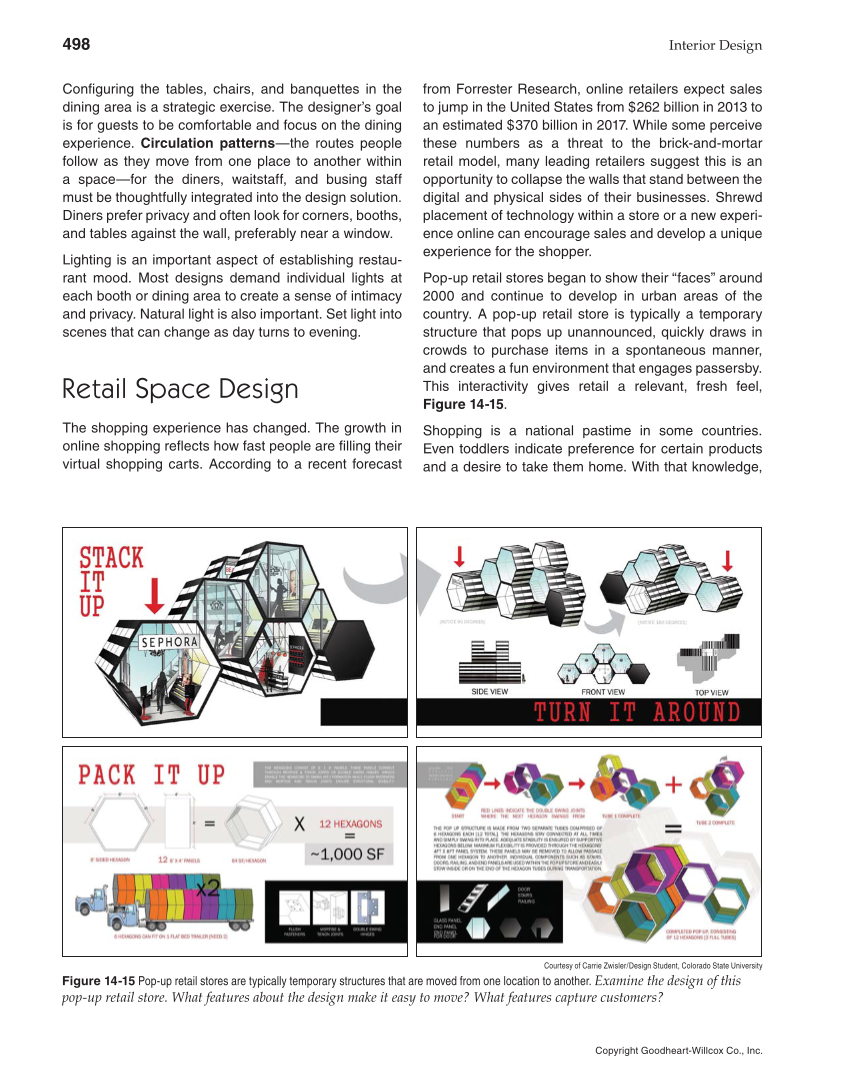498 Interior Design Copyright Goodheart-Willcox Co., Inc. Confi guring the tables, chairs, and banquettes in the dining area is a strategic exercise. The designer’s goal is for guests to be comfortable and focus on the dining experience. Circulation patterns—the routes people follow as they move from one place to another within a space—for the diners, waitstaff, and busing staff must be thoughtfully integrated into the design solution. Diners prefer privacy and often look for corners, booths, and tables against the wall, preferably near a window. Lighting is an important aspect of establishing restau- rant mood. Most designs demand individual lights at each booth or dining area to create a sense of intimacy and privacy. Natural light is also important. Set light into scenes that can change as day turns to evening. Retail Space Design The shopping experience has changed. The growth in online shopping refl ects how fast people are fi lling their virtual shopping carts. According to a recent forecast from Forrester Research, online retailers expect sales to jump in the United States from $262 billion in 2013 to an estimated $370 billion in 2017. While some perceive these numbers as a threat to the brick-and-mortar retail model, many leading retailers suggest this is an opportunity to collapse the walls that stand between the digital and physical sides of their businesses. Shrewd placement of technology within a store or a new experi- ence online can encourage sales and develop a unique experience for the shopper. Pop-up retail stores began to show their “faces” around 2000 and continue to develop in urban areas of the country. A pop-up retail store is typically a temporary structure that pops up unannounced, quickly draws in crowds to purchase items in a spontaneous manner, and creates a fun environment that engages passersby. This interactivity gives retail a relevant, fresh feel, Figure 14-15. Shopping is a national pastime in some countries. Even toddlers indicate preference for certain products and a desire to take them home. With that knowledge, Courtesy of Carrie Zwisler/Design Student, Colorado State University Figure 14-15 Pop-up retail stores are typically temporary structures that are moved from one location to another. Examine the design of this pop-up retail store. What features about the design make it easy to move? What features capture customers?
